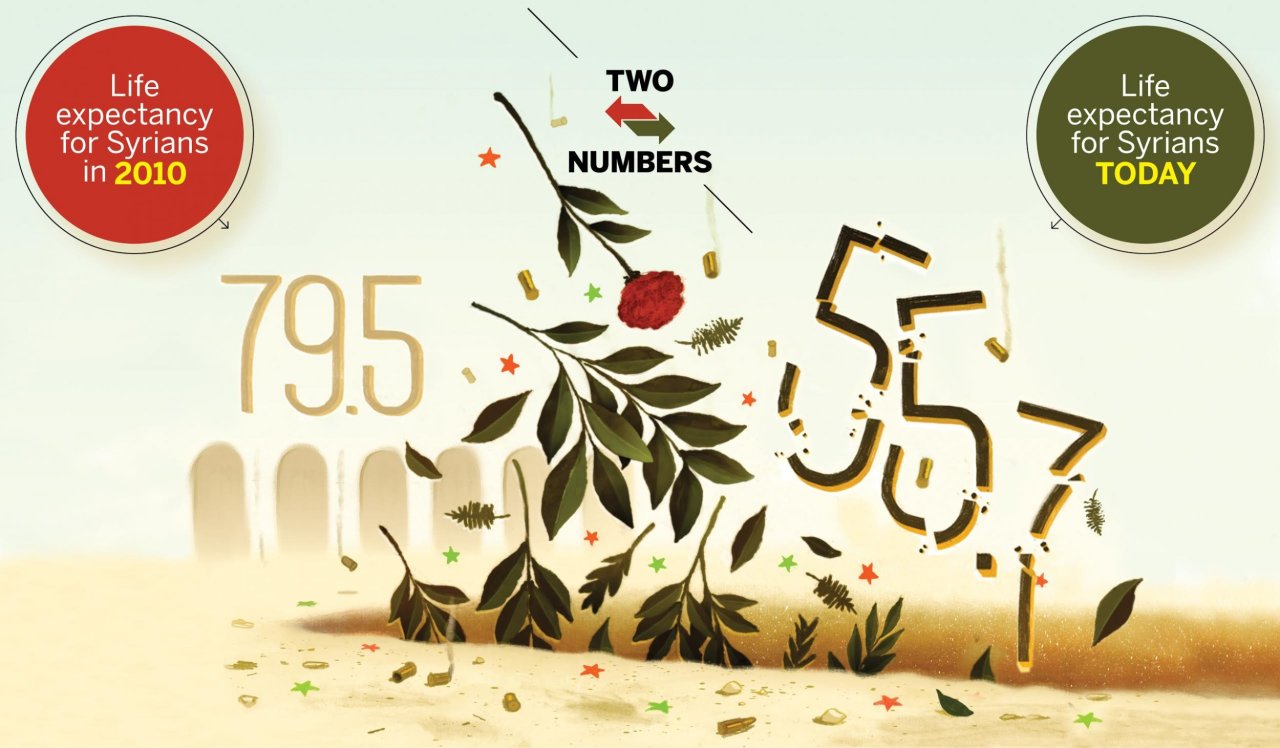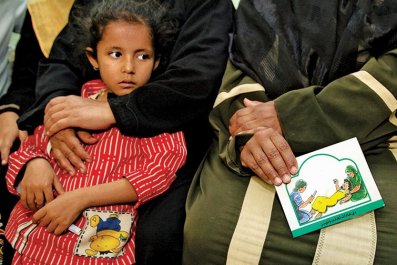Updated | As the conflict in Syria enters its fifth year, a new report says life expectancy for Syrians has plummeted by more than 20 years over the course of the war.
Before 2011, Syrians could expect to live, on average, 79.5 years. In 2014, life expectancy dropped to 55.7, according to "Syria: Alienation and Violence, Impact of the Syria Crisis," a report published this month by the Syrian Center for Policy Research, in Damascus.
"There was a substantial increase in death rates due to the crisis, especially conflict-related deaths, which almost doubled in 2014," said Christopher Gunness, a spokesman for the United Nations Relief and Works Agency for Palestinian Refugees in the Near East (UNRWA), one of the U.N. agencies that helped with the report. "Increasing death rates among youth, who had a low probability of death before the crisis, became a significant component in the regression of life expectancy."
The peripheral ravages of the war, such as the destruction of health care facilities, difficulty accessing childhood vaccines for tuberculosis and polio, and an increase in poverty, have also reduced life expectancy.
The nearly 30 percent drop in life expectancy, combined with the loss of 15 percent of the Syrian population—largely due to a refugee exodus—is called a "silent calamity" in the report. Syria's population now stands at around 17.65 million, down from 20.87 million in 2010. Four million refugees have fled, mainly to Egypt, Lebanon, Jordan, Iraq and Turkey. Inside Syria, nearly 7 million people have been displaced. Six percent of Syria's population has been maimed or killed during the war.
Before the war, Syria's life expectancy was on par with developed European countries such as Hungary and Latvia, and the leading causes of death were heart disease and stroke. In just four years, life expectancy has become comparable to that in countries like Burundi and South Sudan. The change puts Syria among the worst countries in the world in terms of health. The U.K.-based Syrian Observatory for Human Rights has recorded the deaths of more than 214,800 people between March 18, 2011, and March 8, 2015. It says at least 65,881 civilians have been killed, including 10,798 children and 6,889 women. More than 3,000 of the dead cannot be identified, and the real death toll is thought to be much higher.
Fighting has also devastated Syria's economy, which has lost $202.6 billion from the war's destruction and the loss of capital. Four out of five Syrians are now living below the poverty line, and unemployment is at 58 percent. Half of all Syrian children haven't attended school in the past three years, the report says.
On Wednesday, a separate report from New York-based nonprofit Physicians for Human Rights claimed the government was responsible for the deaths of 610 doctors and 32 barrel bomb attacks on 24 medical facilities over the past four years. It said that 139 of them were tortured or executed and that hospitals and medical personnel were "targeted" for their work. In 2014, one medical worker was killed every other day, and every four days a hospital was bombed or shelled, the group says. The government has previously been accused of mistreatment of its civilian population, including abduction, torture and execution. A new exhibition at the U.N. headquarters in New York shows a series of photos smuggled out of Syria allegedly showing victims of systematic killings by forces loyal to Assad.
Life expectancy is expected to keep declining as the war goes on. And even if the fighting were to stop suddenly, Syria's crippled health care system means life expectancy will continue to decrease, says Zaki Mehchy, a researcher with the Syrian Center for Policy Research. "The indirect impact is expected to continue after the crisis," he says.




























